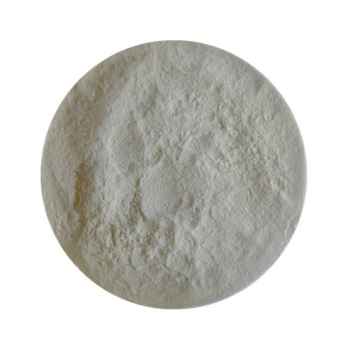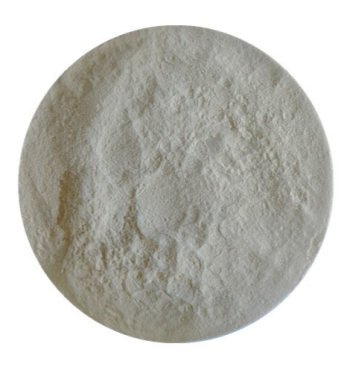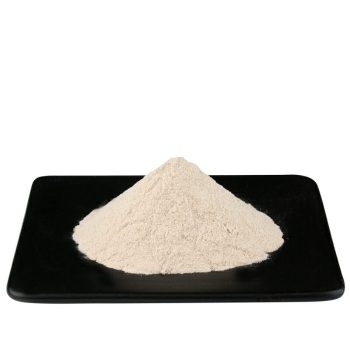
Starch Processing EnzymesThe conversion of plant starch into various sugars is an important branch of the starch industry and at the same time one of the economically most important fields of application of genetic engineering. Innumerable foods contain ingredients that have been derived from the saccharification of starch. Starch Processing Enzymes play the central role in this process – and these are mainly produced with genetically modified microorganisms.
In the past, strong acids had to be used to separate the starch into individual sugars, whereas today almost only enzymes are used. They offer a number of advantages: Since Starch Processing Enzymes break down the branched starch molecules at very specific points, the saccharification process can be specifically controlled. In this way, different starch syrups are obtained, which differ in their sweetening power, but also in their technological properties.
Starch Processing Enzymes Products
The following products are popular enzymes used in starch processing application.
-
Saccharification
Glucoamylase Enzyme Aggressive Liquid Converts All Starch To Sugar In Wort And Mash
$37.50 Add to cart -
Enzymes for Brewing Beer
Liquid Glucoamylase Enzyme For Beer Brewing And Alcohol Distillation 150000 u/g
$10.35 Add to cart
-
Thermostable Alpha-Amylase
Thermostable Alpha-amylase Enzyme Powder 30000 u/g Powder Cas 9000-90-2
$120.00 Add to cart -
Alpha-amylase
Medium Temperature α-Amylase 10,000 U/G Starch Hydrolysis Food Grade
$70.00 Add to cart
Read More about the Starch Processing Enzymes
Wheat protein (also known as wheat flour) is the main by-product in the production process of wheat starch, which is rich in nutrients and a pure natural vegetable protein source of good quality and low price.
Since wheat protein has a unique amino acid composition, contains more hydrophobic amino acids and uncharged amino acids and has a large hydrophobic interaction area in the molecule, this special structure causes its low water solubility and high viscosity, which limits its use.
In recent years, bioenzymatic hydrolysis technology has developed rapidly. After enzymatic hydrolysis, wheat protein can break peptide bonds, increase charge density and change the structure of the protein, expose the hydrophobic amino acid residues and increase surface hydrophobicity. The presence of sex groups makes the protein amphiphilic and increases solubility, which greatly improves the convenience of use and the value of comprehensive use.
Choosing the right enzyme preparation to improve the functional properties of wheat proteolysis products such as solubility, digestibility, etc. is particularly important when using feed.
Under the action of Starch Processing Enzymes, protein molecules are hydrolyzed, their molecular weight decreases, and their spatial structure changes, producing peptide molecules or smaller molecules of amino acids, thus improving their functionality. Commonly used protein hydrolyzing enzymes include alkaline protease, papain, complex protease, taste protease, thermophilic protease, trypsin, pepsin, etc.
Currently, the Starch Processing Enzymes used in the production of wheat hydrolyzed protein in the feed field mainly comprise alkaline protease, neutral protease, and pepsin. Among these, alkaline protease has obvious advantages after comprehensive hydrolysis effects and costs and other factors.
Alkaline protease is an endonuclease that has the properties of high hydrolysis efficiency and weak hydrolysis of amide groups. It can be used to obtain high-quality glutamine peptide products by hydrolysis of wheat gluten protein.
Studies have shown that by the single enzyme hydrolysis experiment with alkaline protease, the enzymatic hydrolysis effect is significant, the content of short peptides in the product is high, the trichloroacetic acid nitrogen solubility index (TCA-NSI) is 77.86% and the effective glutamine content is high, reaching 17.65%; In a double enzyme or multi-enzyme hydrolysis system, wheat gluten protein is hydrolyzed by two or more enzymes.
The hydrolysis efficiency or effective glutamine content increases again, but differs from other non-animal proteases in the properties of alkaline proteases. Compared to sexual protease, their hydrolysis efficiency is very high and the introductory effect of other enzymes is not obvious, but increases the costs.
Treatment of wheat protein with proteases, in addition to producing small peptides and amino acids to improve function and digestibility, significantly improves the solubility and ease of use of the product.
In enzymatic hydrolysis, the increase in low molecular weight peptides destroys the network structure and reduces swelling, as the depolymerization of protein multimers and the increase in ion groups causes the order of the protein molecules and the protein to increase The apparent volume of is reduced, which reduces viscosity, and under acidic or neutral conditions there is not much difference in the flowability of the enzymatic hydrolysate solution.
At the same time, wheat proteolysis products have the properties of low viscosity at high concentrations and are particularly suitable for liquid foods that require high protein content and cannot add wheat protein. They can be used as a good supplement to the nitrogen source in foods without affecting the food. Fluid properties that also contribute to its application in the feed sector.
Perspective of application of wheat hydrolysed protein in feed
The wheat hydrolysed protein produced by the enzymatic hydrolysis process improves the solubility of the raw materials and contains a large number of active small peptides. Compared to the non-hydrolysed wheat protein raw materials and various other animal and vegetable raw materials, it has unique functional properties that promote its application in the feed industry.
The optimal production of high-quality hydrolyzed protein through the enzymatic hydrolysis process helps to efficiently utilize the available protein resources
Rice protein is a recognized high-quality vegetable protein and an important source of protein for people’s daily nutrition. It has the properties of a proper balance between amino acid composition and low allergy. It is very well suited as a nutritious food for infants, children and special people.
From an economic point of view, it is not appropriate to extract protein directly from rice for further processing, and rice by-products, organic acid, antibiotic fermentation and by-products of starch sugar production, rice residues, are good raw materials for further processing of rice protein.
Rice residue is the residue of rice flour liquefied by high-temperature amylase and filtered through plates and frames to remove some of the carbohydrates. The protein content is more than 40%, which means that most of the protein is retained in the rice and the protein extracted directly from the rice has almost the same nutritional value.
Every 7 tons of rice consumed in starch sugar production produces 1 ton of rice residues. Research and product development of rice residue proteins can not only fully utilize rice protein resources, but also help to improve the economic benefits of starch sugar production companies.
However, since the water-insoluble gluten in rice residue protein accounts for more than 80%, and during the saccharification of rice, high heat and pressure cause the protein in rice to denature and form a glycoprotein complex with the sugar via the Maillard route, resulting in protein extraction is difficult, solubility and emulsification are poor, and processing performance is poor, so that it is currently mainly used as animal feed, rarely used in the food industry, and waste of resources is severe.
The Starch Processing Enzymes preparations break down and modifies the rice protein, making it a soluble peptide and extracting it so that the rice residue protein can be deeply developed and used. It is used in the food, health food or pharmaceutical industries to further improve the rice protein. Comprehensive utility value.、
Starch Processing Enzymes method for removing sugar from rice residues and application of proteolysis
In addition to the main component protein in rice residues, the total sugar content exceeds 30%. These sugar residues remaining in the rice residues were liquefied by high temperature amylase during the production of rice residues. The original starch is low and more dextrin and oligosaccharides are broken down. Therefore, the carbohydrates can first be treated with α amylase and glucoamylase to increase the protein content of the raw material, which is more conducive to protein hydrolysis in the subsequent process.
The rice protein obtained after enzymatic sugar removal is insoluble in water and must continue its enzymatic modification in order to be widely used in food production. The deep hydrolysis of rice protein after sugar removal is mainly performed by the protease method. In general, alkaline protease, neutral protease, acid protease, papain etc. have a good effect on the hydrolysis of such proteins. It is usually more economical to select several proteases for common use.
Process for the preparation of proteolysis of rice residues:
Rice residues grinding temperature adjustment by temperature adjustment-sugar removal by enzymatic method (temperature-resistant α amylase / combined enzyme preparation DFT-04) -removal of sugar by centrifugation-water washing temperature adjustment of temperature adjustment-adding the protease depth reaction enzyme killing centrifuge to collect the supernatant concentration and drying
Starch Processing Enzymes preparations Products of the ZF series are vegetable protein special hydrolases that have been developed according to the properties and processing of vegetable raw material proteins. They can hydrolyze rice protein to peptides and amino acids, reduce the protein molecular weight and thoroughly hydrolyze it, thereby improving its solubility. Emulsifying and foaming properties improve the nutritional value and further extend the range of applications of rice protein.







